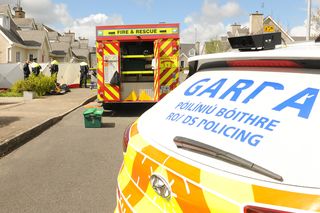Prefab 'solutions' sprout as councils forget past levy loot
Prefabs
"I lost Ellen 25 years ago. But to me she's still here. All my memories are in this place. Every little detail. It might sound strange but if they demolish this place they demolish me as well."
Eddie O'Mahony, a 91-year-old widower was speaking to the Daily Telegraph in 2012 from the living room of his "temporary" prefab house in the Catford estate in Lewisham, London that he moved into in 1946. At the time of the interview, the Catford prefab estate was once again under threat of demolition by the local council which had pushed for its clearance a number of times since the 1950s.
The widower talked about being demobbed from the war in 1946 to find his young wife and their six-month-old baby living in one damp room. Amidst the UK's post war housing crisis the council official took them to a busy construction site.
At this new home scheme, their new dwelling was listed in the brochure as "The Excalibur." As they walked towards it the official asked in a tone that was also half a warning and half an apology: "You know it's a prefab?"
Eddie recalled how his heart sank. He told the Telegraph: "I wanted a real house. I'd had enough of living in Nissen huts and tents."
Catford was part of the 150,000 unit plus prefab building drive which took place right after the war at the behest of Churchill under his Housing (Temporary Accommodation Act) 1944.
Built in corrugated metal, precast concrete and asbestos, they usually spanned 600 sq ft to 1000 sq ft in size and most had two or three bedrooms.
The "Airoh" type was built entirely on a line that had made aircraft and it arrived complete (including curtains) on the back of a lorry. The factory turned out one Airoh prefab home every 12 minutes.
It had a fridge and kitchen set that folded into a wall and former British Labour leader Neil Kinnock, who was raised in one, recalled later: "It seemed like living in a space ship."
Until 20 years ago - that is 50 years after their construction - most of the "temporary" prefab homes built across the UK post-war were still standing and acting as social housing for councils.
It is ironic that the only reason the prefabs estates are now under threat of demolition today is that the low density sites which included sizeable gardens to grow vegetables, keep chickens and make them enormously profitable to redevelop today.
Even so, today there are still a few thousand UK post-war "temporary" prefabs standing - 70 years later with the result that they are now being listed as buildings of historic importance.
The international history of prefab housing shows that "temporary homes" erected in a housing crisis nearly always remain standing long after their intended life span.
And because the construction is not designed to last, they often (but not always) end up being sub standard for human accommodation. Despite their sentimental affiliations to their homes Catford residents widely report bitter cold from wafer-thin walls and widespread damp and rot throughout their homes.
In Ireland, our experience with "temporary" prefab buildings came in education and the 30-year-old prefabs which had become health hazards in schools by the early Tiger years. Built in the 1970s to provide temporary classrooms for that decade's population spurt, they were still standing three decades later with leaky roofs, freezing conditions inside, mould and holes in the floor.
Our history of "temporary" housing includes the Mosney refugee centre where the Government signed a five-year deal with the owners back in 2000 to turn small holiday "villas" into temporary refugee housing. Residents are still there 14 years later and recently one resident told the Sunday Indpendent that they'd be "better off in Mountjoy."
The lesson we learn from Catford and Mosney is that temporary accommodation to solve a housing crisis is a particularly dangerous concept, precisely because the homes hang around for decades.
In the meantime they let councils off the hook. During the week Dublin City Council's head of housing Dick Brady became the first to broach the "P" word, stating that his Council was "seriously looking" at building prefabs as a temporary measure to house the 156 families with 341 children currently being put up in hotels at an expected cost of around €5m this year.
Would he consider that this figure equates to just 10pc of the total development levies taken by his council (€51.6m) from builders, as per unit development levies in 2007, the peak year of the boom. The 2006 levy total was €51.3m and the 2005 take was €42.7m.
It means that the cash raised in every single one of those years Dublin City Council could have bought a €270,000 home outright for each and every one of those 156 homeless families today living in hotels. Where did that money go guys?
Join the Irish Independent WhatsApp channel
Stay up to date with all the latest news














